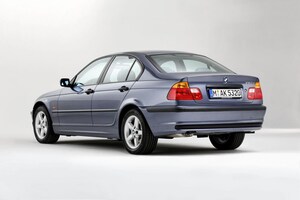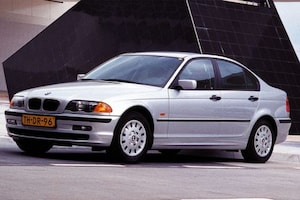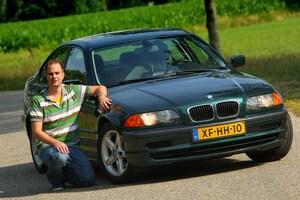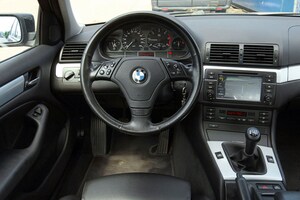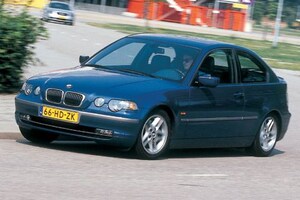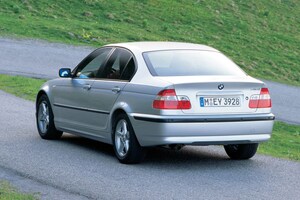Nice punishment, quite analogous
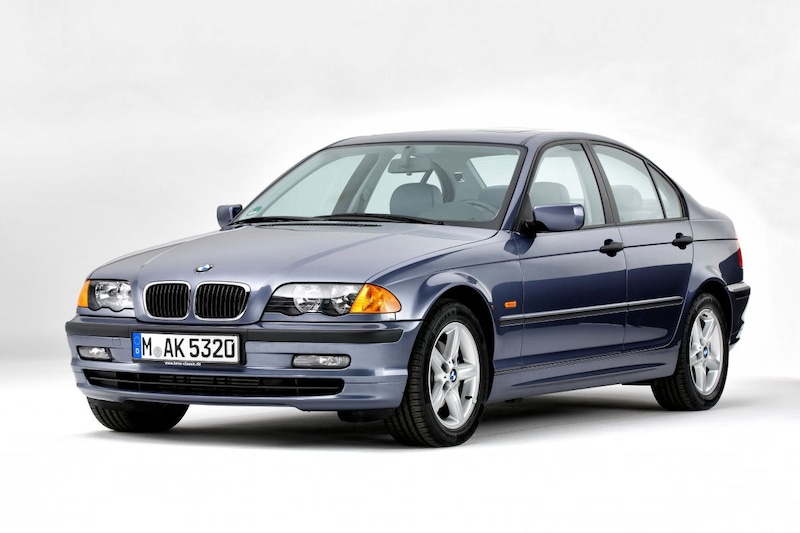
In what we consider a top year, BMW put the fourth generation of the 3 Series in the showrooms. In 1998 it was launched as a sedan, in good tradition initially with more six-cylinders than four-cylinders and also fitting for the time: it heralded a new diesel era for the brand.
What was the start-up process like?
After more than seven years, you would say it was time for a completely new generation of the 3 Series. Its predecessor, the model series referred to in expert circles as the E36, had already been unveiled in 1990 and in those days a life cycle of eight years was truly unprecedented. Yet the public still loved the existing 3 Series when the new one was ready to replace it in the spring of 1998. The Dutch importer begged the factory to get the last copies of the E36, because the demand was still enormous. This indicates that the design of the predecessor, which raised eyebrows in 1990, was still good. The E46 expanded on the styling with the headlights behind a front glass. The L-shaped taillights and styling of the E39 5 Series made it a modern interpretation of the third generation 3 Series. The design was by Chris Bangle, who would come under heavy fire three years later for the 2001 7 Series.
How revolutionary was he really?
It was a sports sedan that evolved, but with its wheels far in the long nose and rear-wheel drive, it did not set new benchmarks in terms of space. That’s not why you bought a BMW anyway. It was again a real driver’s car, with a nice, low seating position and a dashboard with a center console facing the driver. The 3 Series received head airbags, ABS with cornering brake control and for the first time there was a common rail diesel with direct injection. The latter was also far from revolutionary, because Audi had it eight years earlier and Alfa Romeo and Mercedes-Benz even introduced common rail diesels in 1998. The 320d would only receive common rail technology in 2001, when the diesel gun with six-cylinder common rail injection 330d had already been available for two years.
How was he received?
The styling was well received and the 3-series E46 proves that Chris Bangle could really draw beautiful BMWs before he indulged in the 7-series of 2001. The somewhat stocky styling had something powerful and you saw in the first I immediately noticed that this design language would lend itself perfectly to a beautiful coupe. It was a tough pill to swallow for the wallet. The new 3 Series started at fl. 62,950 (€28,565) as a 318i, while in the last year of the E36 there was a 316i that you could buy from €22,666. The last 318i of that generation cost you at least €25,843. We were also immediately pleased with the driving characteristics at AutoWeek, with most attention during the first introduction to the new diesel, which was called 320d.
How was it received by consumers?
The audience did not have to get used to the new styling. After all, the biggest shock with a model change to the 3 Series was almost eight years in the past. The transition from E30 to E36 was really big, so the E46 was quickly accepted in terms of styling. The Touring, the Compact and the Coupé and Convertible of the old model remained available until 1999, which probably helped with the acceptance of the new model, which in 1998 was only available as a sedan in the showrooms.
What were the choices during the market introduction?
The 318i was the entry-level model, the 1.9 liter four-cylinder still had two valves per cylinder, but did have balance shafts for quieter running. With 118 hp, he had some difficulty getting the new 3-series to deliver the Freude am Fahren feeling. The 320d with 136 hp was the other four-cylinder and there were also three six-cylinder petrol versions: a 320i with 150 hp, a 323i with 170 hp and the 328i delivered 193 hp. The equipment was very clear. You either had a bare version where even a folding rear seat backrest was optional or an Executive. It had a hefty additional cost of almost €4,500 and included an alarm, automatically regulated air conditioning, a rain sensor, but also, for example, electrically operated windows and wood inlay.
What were its competitors?
We saw the Mercedes C-class and the Audi A4, but also the Alfa Romeo 156 as competitors. It had been launched six months earlier and turned out to be a bull’s eye. The first comparative test in AutoWeek was a confrontation between the BMW 318i and the Alfa Romeo 156 2.0 Twin Spark 16V, which was more than €8,000 less expensive, despite its much more powerful engine.

The Convertible of this BMW 3-series came in 2000, and again there was a Compact. The predecessor of the 1 series.
Any details during his life?
Certainly! The Touring and the Coupé arrived in 1999, in 2000 the E46 Compact, the three-door hatchback version and the Cabriolet followed, and in 2001 the highlight: the M3 based on the coupe, with a 343 hp 3.2 inline-six. A car from which the power was dripping and which is now a popular youngtimer. Especially like the even more brutal CSL, which was extra hardcore with a carbon roof and the SMG transmission. BMW often changes something on its engines. For example, the 2000 facelift marks the turn of a newer generation, resulting in new type designations. The 170 hp 323i will disappear, a 325i will be introduced, with the power of the 328i and the top of the normal 3-series will be a 330i. The engine capacity of the 320i is also increasing, although it will not become a 322i, but will remain in the books as a 320i, with 170 hp, the power of the old 323i. Yes, anyone who can link all type designations to the correct cylinder capacity and the correct power can call themselves a BMW expert. In 1999 there was also a six-cylinder diesel, the 330d, finally a diesel with common rail injection. The 320d became a common rail diesel in 2001 and went from 136 to 150 hp. For those who thought that was too much diesel violence, BMW brought a 115 hp 318d. Did it become even more affordable? The 316i came in 1999 and had a 1.9 that had been tweaked to 105 hp.
![]()
Which version appeals most to the imagination?
There are so many bodywork variants that you first have to decide which one you want. The M3 is a sports car in 3-series Coupé guise and of course we think it is very special, especially as a CSL. Did you know that a prototype of a Touring, i.e. the station wagon, was made of the M3 E46? We are going for nice old-school, so for us it will be a sedan or a Coupé and then one with the biggest six-cylinder, from after the facelift: a 330i or 330 Ci with manual gearbox. They were delivered from the end of 2000 and with a top speed of 250 km/h and a 0-100 sprint in 6.5 seconds, it is still nice and fast by today’s standards. If you have the money, go for the M3 CSL.

We would like to have a 330 Ci, yes. Nice one with a manual gearbox.
What has been the impact of the 3 Series E46?
For a long time, enthusiasts said the E46 was the last beautiful BMW 3-series, but those were people who did not like the 2005 successor (E90) in terms of appearance. It was still a really nice compact sports sedan, albeit in the middle class, and a car where the manual gearbox was still standard on almost all versions. In that respect it is certainly one of the last old-school 3-series. It was a car with a strong chassis, much more pronounced than the 3-series that came after it and which also offered more comfort in terms of chassis. In terms of sales numbers, the later 3-series would make more of an impression.
How many Dutch copies of the E46 are left?
The range of 3-series of the E46 generation is large and prices still start at €2,000. There is a good chance that you will come across a Compact for that amount. In total, there are still more than 20,000 copies of this 3-series model in the Netherlands, distributed as follows across the body variants:
| Convertible 3,135 |
| Coupe 3,645 |
| Hatchback 1,673 |
| Sedan 7,441 |
| Station wagon 4,452 |
source: Vinacles
– Thanks for information from Autoweek.nl
